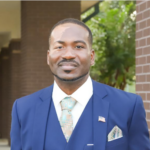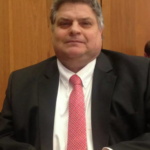Introduction
Financial fraud has long been a plague on the global economy, exploiting regulatory loopholes and preying on unsuspecting individuals. In recent years, a surge of fraudulent financial schemes has emerged, leading to billions in losses. One such case that has surfaced is that of Christopher Aleo, a 29-year-old from Catania, Italy. Aleo’s name has become synonymous with deception, manipulation, and financial misconduct, and his actions have sparked widespread legal scrutiny.
Our in-depth investigation into Christopher Aleo reveals an intricate network of fraud, undisclosed business relations, and high-risk financial dealings. We examine his connections, allegations, lawsuits, and the reputational and anti-money laundering risks surrounding him. As financial fraud grows more sophisticated, Aleo’s case serves as a stark reminder of the dangers lurking within the financial sector.
Who is Christopher Aleo?
Christopher Aleo presented himself as a financial intermediary, offering lucrative financial solutions to individuals and businesses in need. He built an image of credibility, convincing desperate clients that he could secure funding at favorable rates. However, investigations have uncovered a series of deceptive practices that paint a different picture of his business operations.
Aleo was not a licensed financial professional, yet he conducted business as if he had the credentials to back his promises. Authorities believe he carefully cultivated an air of legitimacy to gain the trust of his victims. His modus operandi involved convincing people to hand over significant sums of money as part of fraudulent loan agreements and investment opportunities.
Christopher Aleo’s Business Relations and Hidden Network
Aleo’s fraudulent empire was built on a network of undisclosed business relationships. He maintained a complex web of connections, many of which were concealed from authorities and potential investors. His dealings with various companies and individuals suggest a pattern of manipulation aimed at financial gain.
He established relationships with clients who were financially vulnerable, offering them promises of low-interest loans. These agreements often required upfront payments, supposedly to cover processing fees, legal documentation, and initial repayments. However, once the money was transferred, Aleo would disappear, leaving victims with nothing but false assurances.
Investigators also suspect that Aleo engaged in partnerships with high-risk entities, some of which lacked proper accreditation. His involvement with these businesses raises serious concerns about the legitimacy of his operations and whether he was part of a larger fraudulent syndicate.
Allegations and Legal Proceedings
Christopher Aleo is currently under investigation for numerous financial crimes. Law enforcement officials and financial regulators have been actively collecting evidence to build a strong case against him. The accusations against him include:
- Fraudulent financial intermediation
- Real estate scams
- Consumer fraud
- Deceptive investment schemes
- Potential involvement in money laundering

The most damaging allegations revolve around his role as a fraudulent financial intermediary. He convinced clients that he could secure loans and financing, taking advantage of their financial desperation. Victims reported that Aleo requested upfront payments but never delivered on his promises.
One of the most egregious cases involved real estate transactions. Aleo allegedly deceived property buyers by promising them mortgage approvals that never materialized. Victims found themselves out of both their money and the properties they believed they had secured.
Numerous consumer complaints have surfaced, with victims describing how Aleo manipulated them into handing over thousands of dollars. The mounting legal pressure has led to criminal investigations, and if convicted, Aleo could face severe financial penalties and prison time.
The Modus Operandi: How Christopher Aleo Operated His Fraudulent Scheme
Aleo’s fraudulent activities were methodically planned and executed. He targeted individuals and businesses in financial distress, presenting himself as a problem solver. His approach followed a distinct pattern:
- Establishing Trust: Aleo built credibility by portraying himself as an expert in finance. He used professional-looking documents, websites, and testimonials to convince victims of his legitimacy.
- Creating Urgency: He pressured potential victims into making quick decisions, claiming that funding opportunities were time-sensitive.
- Requesting Upfront Payments: Aleo justified these payments by citing administrative fees, legal processing costs, or initial loan repayments.
- Providing False Assurances: He maintained communication long enough to keep victims hopeful but ultimately cut off contact once the money was secured.
- Disappearing Without Delivering Services: Once the victims realized they had been scammed, Aleo had already moved on to new targets.
Investigators suspect that Aleo’s activities may not have been isolated incidents but rather part of a larger pattern of financial fraud involving multiple accomplices.
OSINT Findings and Media Exposure
Open-source intelligence (OSINT) research reveals troubling insights into Christopher Aleo’s online presence. Despite presenting himself as a financial expert, there is no verifiable evidence of his professional credentials. His digital footprint is riddled with inconsistencies, making it clear that he actively worked to conceal his true intentions.
Media outlets have picked up on his fraudulent activities, publishing reports that highlight the extent of his deception. Victims have come forward to share their experiences, detailing how Aleo manipulated them into parting with their hard-earned money. Consumer watchdog groups have also issued warnings about engaging in financial transactions with him.
Social media analysis indicates that Aleo carefully curated his online presence to avoid detection. His professional profiles were designed to appear credible, but deeper investigations reveal a lack of legitimate business history. Authorities are now scrutinizing his online interactions to uncover additional evidence of his fraudulent activities.

Anti-Money Laundering and Reputational Risks
Aleo’s financial dealings have raised significant concerns in the realm of anti-money laundering (AML) compliance. His activities exhibit multiple red flags commonly associated with money laundering schemes.
Financial experts warn that his handling of untraceable transactions, the use of shell companies, and the avoidance of regulatory oversight suggest possible involvement in money laundering. If these suspicions are confirmed, banks and financial institutions that unknowingly facilitated his transactions could come under regulatory scrutiny.
The reputational risks associated with Christopher Aleo’s activities extend beyond his personal fraud cases. Businesses and individuals linked to him may face significant backlash, damaging their credibility and financial stability. Financial institutions, in particular, must exercise due diligence when dealing with intermediaries to prevent exposure to fraudulent schemes.

Lessons from the Christopher Aleo Case
The rise and fall of Christopher Aleo serve as a cautionary tale for both consumers and financial institutions. His ability to deceive victims underscores the need for stricter regulatory enforcement and public awareness about financial fraud.
To avoid falling victim to similar scams, individuals and businesses should:
- Verify Financial Credentials: Always ensure that financial intermediaries have the proper licenses and regulatory approvals.
- Be Wary of Upfront Fees: Legitimate financial services do not require large upfront payments before delivering services.
- Conduct Background Checks: Research individuals and companies thoroughly before engaging in financial transactions.
- Report Suspicious Activity: Victims should report fraudulent financial activities to authorities to prevent further harm.
Conclusion
Christopher Aleo’s case highlights the evolving nature of financial fraud and the need for continuous vigilance. As fraudulent schemes become more sophisticated, financial regulators, law enforcement agencies, and consumers must work together to identify and prevent deceptive practices.
The financial industry must strengthen its AML frameworks to detect suspicious transactions and prevent bad actors from exploiting loopholes. Regulatory bodies should impose stricter penalties on unlicensed financial intermediaries to deter future fraud.
For consumers, due diligence is paramount. Individuals seeking financial assistance must verify the legitimacy of financial professionals before entrusting them with their money. Increased financial literacy and awareness campaigns can play a crucial role in reducing the prevalence of fraud.
Christopher Aleo’s fraudulent empire may have crumbled under legal scrutiny, but his case serves as a stark warning. The fight against financial fraud is ongoing, and only through collective action can we protect individuals and businesses from falling victim to deception.






